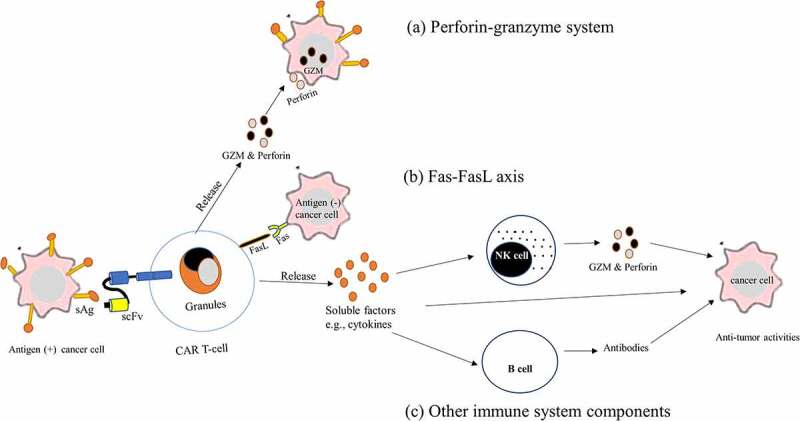Figure 4.

Mechanism of cancer-killing by CAR T-cell therapy. CAR T-cells detect tumor antigens via its scFv of CAR and become activated and kill cancer cells by using several mechanisms. (a) perforin-granzyme system. Activated CAR T-cells quickly release perforin and GZM from their lytic granules, and then perforin creates membrane pores on cancer cells, allowing GZMs entrance into the cytoplasm of the cancer cells and killing them. (b) the death ligand–death receptors such as the Fas-FasL axis: binding of Fas in the cancer cell membrane to the FasL present on activated CAR T-cells, induce apoptotic cancer cell death. (c) Recruitment of other components of the immune system. Activated CAR-T-cells release soluble factors such as cytokines upon CAR engagement with the target antigen. Secreted cytokines infiltrate tumor cells and cause inflammation eliminating cancer cells, and activate other immune cells such as B-cells and NK cells at the tumor site that aid in the anti-tumor activities.
Abbreviations: FasL, Fas ligand; GZM, granzymes; NK cells, natural killer cells; sAg, surface antigen; scFv, single chain variable fragment
